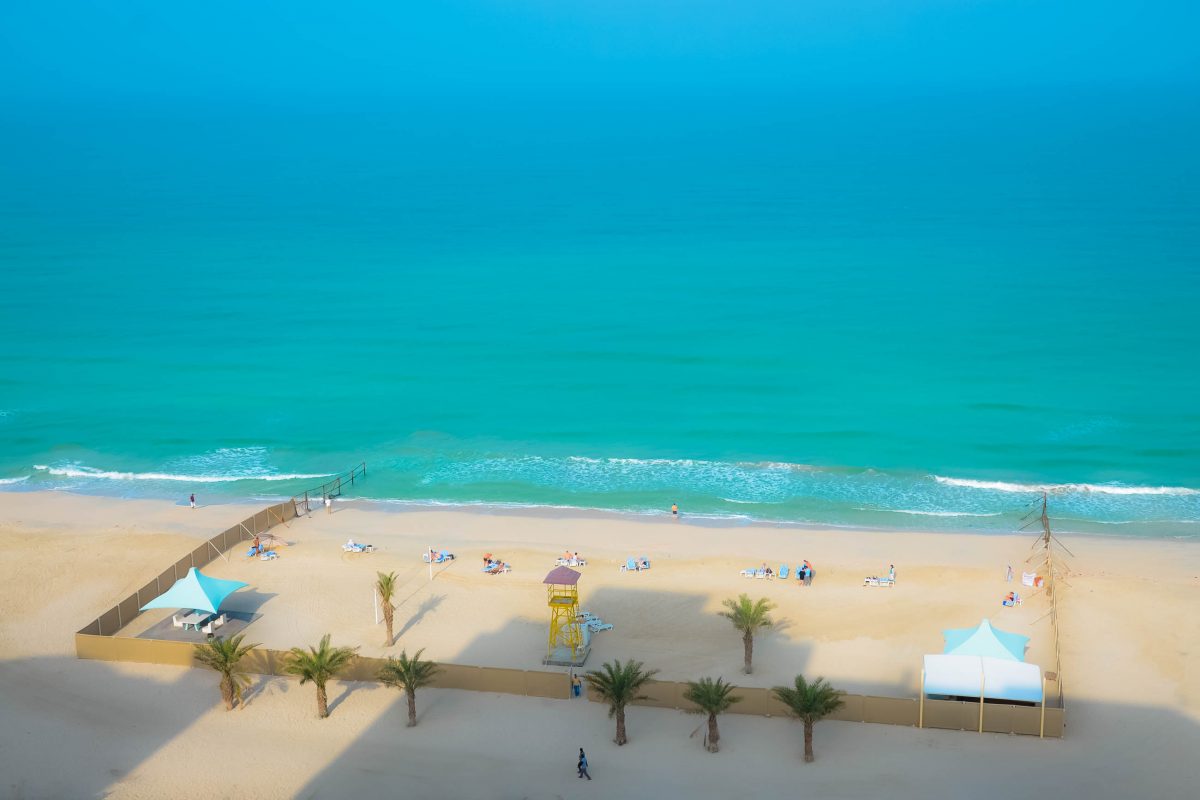Ajman ist das kleinste der Vereinigten Arabischen Emirate und vom Massentourismus bisher verschont geblieben. Wer eine günstige Bleibe als Basis für Ausflüge in die Emirate sucht, ist hier absolut richtig.
Ajman oder Adschman ist mit einer Fläche von gut 250 Quadratkilometer etwa so groß wie die thailändische Urlaubsinsel Koh Samui und das kleinste der sieben Emirate der Vereinigten Arabischen Emirate (VAE). Ajman ist einer der ehemaligen Trucial States und seit dem 2. Dezember 1971 von Großbritannien unabhängig.
Inhaltsverzeichnis
BILDER: Ajman
Der größte und belebteste Teil von Ajman erstreckt sich auf einem 16km langen und 10km breiten Küstenstreifen und bildet die Hauptstadt Ajman Stadt etwa 20 Kilometer nordöstlich von Dubai. Neben Ajman Stadt gehören noch die beiden winzigen Enklaven Manama und Masfut in der Nähe von Hatta zu Ajman, die 60 bzw. 110km von Ajman Stadt entfernt liegen und abgesehen von einer bizarren Wüstenlandschaft kaum Sehenswertes zu bieten haben.
Ajman Stadt

Ajman Stadt kann mit dem orientalischen Prunk von Dubai oder Abu Dhabi kaum verglichen werden, das einstige Fischerdorf wirkt eher ungepflegt. Dafür ist Ajman bis jetzt noch vom Massentourismus verschont geblieben und die Luxushotels sind um einiges günstiger als jene in den benachbarten Emiraten.
Ajman Fort
Die wichtigste Sehenswürdigkeit von Ajman ist seine Festung, die im Jahr 1775 von den Portugiesen zur Verteidigung des Hafens errichtet wurde.
Seit 1991 beherbergt die Festung ein Museum, in dem die Lebensweise in den Vereinigten Arabischen Emiraten vor dem Öl-Boom nachvollzogen werden kann. Die klimatisierten Räume erzählen von Perlentauchern, Fischern, Dhau-Meistern, Medizinern sowie Schule und Spiel der letzten Jahrhunderte in Ajman.
Rund um das Fort breitet sich der historische Stadtkern von Ajman mit Läden und Lokalen aus, über denen die Festung in der Nacht als leuchtender Blickfang strahlt. In der Altstadt sind vor allem die Windtürme sehenswert, die einst die Gemächer der Scheichs und deren Harem beherbergten, und die traumhaft schöne Sheikh Zayed Moschee.
Strand von Ajman

Der Strand, der sich von Ajman bis ins Nachbar-Emirat Sharjah erstreckt besteht aus weichem, hellen Sand und ist neben der Festung der zweite Anziehungspunkt für Touristen. Sanitäre Einrichtungen und Liegestühle gibt es allerdings nur bei den Hotels und Strandclubs. Strand und Corniche lagen ohnedies weniger zum Baden und mehr zum Spazieren ein.
Shopping in Ajman
Der neue Souq von Ajman gleicht im einzigartigen neo-arabischen Gebäude der Stadt eher einem modernen Einkaufszentrum als einem traditionellen orientalischen Markt. Hier gibt es neben Sportartikel, Kleidung, Schmuck, Kosmetik, Spielzeug und Lebensmitteln auch eine Vielzahl an Restaurants und Cafés.
Am großzügigen Gold-Souq kann man ohne Probleme eine gesamte indische Familie mit glitzerndem Schmuck ausstatten und am iranischen Souq am Hafen werden morgens und abends hauptsächlich Haushaltsartikel aus Plastik verkauft.
Wer groß angelegte Shopping-Ausflüge unternehmen möchte ist im Ajman City Centre in der Wasit Street mit rund 70 Shops und Boutiquen wohl besser aufgehoben. Und wem diese zu klein ist, kann einen Abstecher in die berühmte Dubai-Mall unternehmen.
Dhau-Werft
Die bekannte Dhau-Werft von Ajman liegt etwas außerhalb vom Stadtzentrum und zeigt die Entstehung der traditionellen Holzboote in der Manier eines Freilichtmuseums. Der Bauprozess kann hier vom nackten Skelett bis zum fertigen Dhau nachvollzogen werden und viele Arbeiter freuen sich, Touristen in einer kurzen Tour über die neue entstandenen Schiffe zu geleiten.
Wirtschaft von Ajman

In den 1930ern verschaffte es sich mit Perlenhandel, Fischerei und Dhau-Bau einen bescheidenen Wohlstand. Noch heute ist die größte Schiffswerft der VAE in Ajman angesiedelt, die auch zu den landesweit größten Herstellern von Stahl gehört.
Ajman besitzt jedoch weder eigene Öl- noch Erdgasvorkommen und daher in punkto Reichtum mit den anderen Vereinigten Arabischen Emiraten nicht mithalten. Einkünfte erhält Ajman aus Handel und Tourismus, sowie von Subventionen seiner reichen Nachbarn.
Durch groß angelegte Bauprojekte an der Küste des Persischen Golfs soll nach Vorbild von Dubai und Abu Dhabi auch in Ajman der Tourismus angekurbelt werden. Anders als in Dubai, wo die Küstenlinie durch künstliche Landbeschaffung verlängert wird, setzt man in Ajman auf Lagunen und Kanäle, die in das Festland hinein gegraben werden. Und so ragt mittlerweile ein gewaltiges Ypsilon aus Meerwasser in das Häusermeer von Ajman.
An dieser künstlichen Küste sollen neue Büro-, Wohn- und Unterhaltungszentren entstehen, die rund ein Drittel günstiger zu haben sind, als die Pendants in Dubai.
Weiterführende Links:





